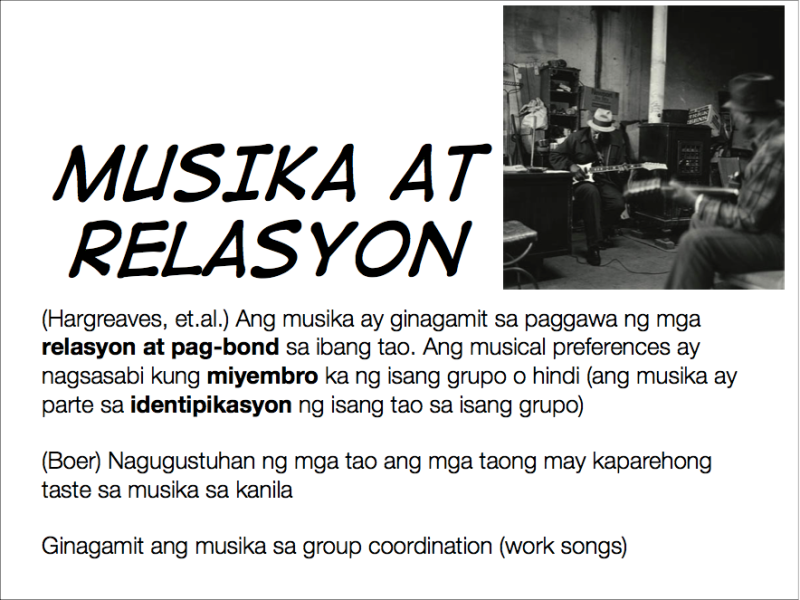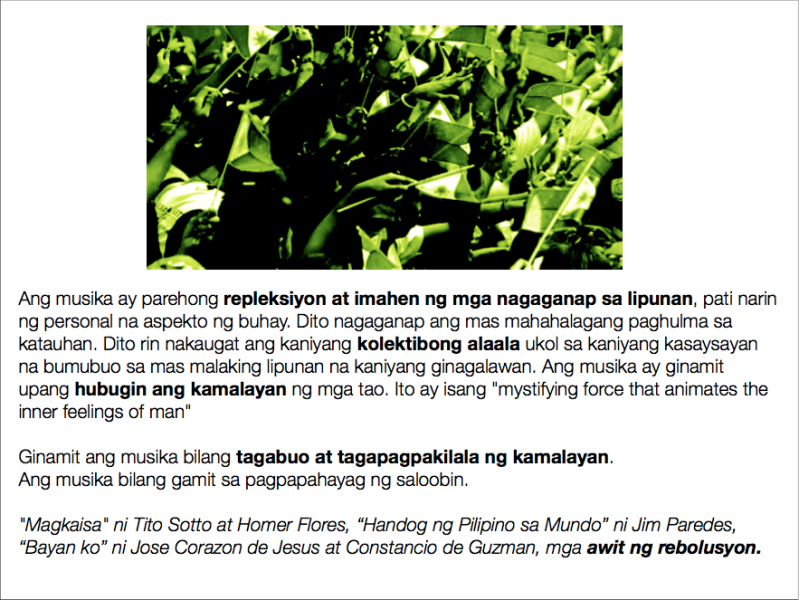
Sunday, October 10, 2010
Saturday, October 9, 2010
Cristina Menchaca


We’ve recently taken up the chemical senses (olfactory and gustatory), so I was motivated to look up on an article that had to do with smell. After all, there are certain smells that we all don’t like: poo, puke, spoiled stuff, etc. Not only that, but we Filipinos agree that we’re really sensitive to smell, most especially when those smells aren’t a good thing.

When adults smell poop, sweaty feet, or garbage on a hot day, their reactions can be reliably predicted: intense dislike. However, this isn’t the case for kids, infants, and neonates, because their reactions are harder to predict. In the most rigorous and recent study on neonates, it was found that neonates' facial responsiveness to odors that adults find pleasant or unpleasant provided few indications of adult-like preferences. Studies involving preschool kids are mixed: one study found no evidence of dislike for sweat or fecal-type odors but other studies found that children as young as 3 to 4 years were similar to adults in their rank-order preference for a range of odors. Notably, the size of the “hedonic interval” between odors increased with age, suggesting that children were more tolerant of malodors than adults. Data obtained from older children are more consistent. Different studies from different decades all reported that by age 7, children's hedonic responses are similar to those of adults. These findings converge with conceptually related studies of disgust development (in which children's understanding of contamination was assessed). It was found that contamination sensitivity increases markedly from ages 3 to 9. The implications of these intervals and increases? Contamination sensitivity and the formation of adult-like hedonic responses to certain odors (especially fecal and body odors) may be related to the understanding of the contaminating nature of the odor's source. In other words, our dislike for certain orders could be because we know and understand that those smells are supposedly bad. This is mediated by age, because we learn more about what’s “good” and what’s “bad” as we grow older.

The bottom line: we’re not exactly sure about about the point in development when adult-like hedonic responses become apparent, but there is consensus that age-related changes in hedonic response to odors do occur. The study I’m going to discuss looks exactly at the latter. Stevenson and Repacholi designed experiments that examined changes in hedonic responsiveness to male sweat before and after puberty. In simpler words, they asked the question along the lines of “Does the response to male body sweat depend on age/ change as we get older?”

Why male sweat? One reason is that male sweat is an odor that many adults find repellant, as confirmed in studies (sorry guys). Another is that that changes in the hedonic response to sweat may occur relatively late in childhood. Why? Apocrine sweat glands, the major sources of odorous sweat, are relatively benign before puberty. Thus, children have relatively little exposure to odorous sweat at such time. After puberty, sweat, especially in males, starts to smell pungent because of bacterial action on the apocrine secretion. Thus, puberty is likely to be the first time that most individuals routinely encounter this odor. In addition to this smell, considerable energy is spent on advertising products that mask body odor. There also are widely held beliefs about the negative meaning of body odor. Thus, the odor of male sweat should begin to elicit intense dislike sometime during or after puberty.

How are intense dislikes toward odors acquired? According to Kirk-Smith and Booth, two steps are involved: first, the odor must be experienced. Second, this experience must acquire meaning. This means that the odor has to be correctly named or identified, as meanings come with their labels. Note that in natural conditions, labeling would not be important, but when odors are studied in the lab, out of context and without accompanying visual cues, they are actually notoriously hard to identify. Stevenson and Repacholi took note of this in their experiments too.

So what did they find? When no cues were given about the identity of the odors (participants did not know what they were smelling), all male and female children, adolescent males, and adult males disliked male sweat to a similar extent. Adolescent females and adult females intensely disliked the odor and were more able (than the other ‘groups’) to correctly identify that the odor was male sweat. When odor identity was cued, or when participants were told that what they would smell was from used clothing, both male and female adolescents intensely disliked the smell. Cuing had not much effect on children. They rated the smell as less unpleasant than did adolescents, and they also reported that they were less familiar with the odor. These findings support the claim that hedonic responsiveness to odor is affected by developmental change. According to literature, this is consistent with a model of olfactory hedonics ‘in which the acquisition of meaning is important to the development of intense dislikes’. Labeling did not affect the children’s response because of a lack of exposure and a lack of meaning between the smell and its label. The key exposure to male sweat probably occurs in males largely through their own sweat and in females through incidental or intimate exposure to males. During this period, both male and female adolescents also are probably learning an association, primarily between the label sweat and the pungent odor of male sweat. This learning is presumably accompanied by the formation of negative attitudes to body odor from peers, parents, and the media. The result? By late adolescence, certain body odors (from strangers) in certain circumstances (public transport) come to invoke intense dislike. Finally, let’s not forget how the results proved the importance of labeling. There were gender differences in the hedonic response to male sweat- the female adolescents disliked the smell more and were more able to identify it. This better identification among females is an ability that has been linked to their enhanced retention of odor names and reaction to the odors. Not only is male sweat probably an acquired social response, but this judgment is also affected by the ability to identify the odor. If we didn’t know we smelled sweat, we probably wouldn’t necessarily find the smell extremely disgusting, compared to if we knew what the smell was.

I honestly found this study so intriguing because it had to do with body odor. After all it’s not just interesting finding out things about what we like, but also about what we don’t like. And the thought that responses to male sweat could be affected by age was interesting too. This could mean so many things: could we care less about the smell if our word for it had a positive connotation, if we didn’t know where the smell came from, if our culture didn’t find the smell bad? I liked that the researchers didn’t just see if exposure to a certain smell and knowledge and meaning of that smell affected our perception of smell- they also considered the literature behind the smell, and picked a smell that whose perception by receivers could be affected by age because of the biology and physiology of the person. I liked that the researchers took care in making sure about their results by having different comparison smells, etc., and by taking into consideration the meaning of a smell as determined by its label. Finally, I liked that this study was once again, proof that our perceptions are not just determined by a single mechanism. Receptiveness to a smell wasn’t just about the nose. It had to do with knowledge of the term and prior experience (top-down knowledge, not just bottom-up), and it also had to do with vision (lack of visual cues makes it hard to identify where smells are from, which affects how we react to the smell). Of course, it was also quite entertaining reading the process of obtaining the body sweat of males. Three of them were not told to eat certain foods (such as spicy ones) for so long, and then they all washed with a non-smelling soap, and then they were all given tight, white cotton shirts to wear as they exercised for an hour. MMM. Haha.

I liked that this study has so many implications. Knowing that we react more negatively when we know the source of a bad smell, does that mean that it’s really a case of “mind over matter”, since cues and labels affect our perception of smells? Do labels and experience extend to other types of bad smells? Would there be a difference between the reactions of males and females such as in the case of our culture where we are easily offended by bad smells? Or would we be affected similarly, in the sense that if we did not know that such smells were considered bad, or that if we could not pin point the smell or where it comes from, then we would be less “offended”? Do we find bad smells bad because we grow up learning to dislike them, like others around us do? And how does culture come into play? Because certain cultures find certain smells “normal”, unlike other cultures. It’s crazy knowing that a smell we would think is universally bad isn’t after all. I wonder if in the future, results from more advanced studies can help us figure out how to be less offended by certain smells. Is it by changing a label, not having a label, lack of exposure, or exposure to the point of desensitization, taking out other cues? It’ll be great because smells really affect the way we deal not just with situations but with people. It can be mean, but what can we do if we can’t stand those smells? Or can we deal with them after all?

True to what we’ve discussed on our last day of class, perception is intertwined in every topic, and in anything we do. Who knew how even studies on smells could imply so much, now that we know that they depend on ages and labels and cues and meanings. Not only is perception everywhere, but smell in itself is not a solo sensation- it depends on so many things too.
Stevenson, R., & Repacholi, B. (2003). Age-related changes in children's hedonic response to male body odor. Developmental Psychology, 39(4), 670-679.
Final stretch!



 environment holistically instead of a bunch of incoherent signals that don't seem to make sense.
environment holistically instead of a bunch of incoherent signals that don't seem to make sense. but still keep you less stressed since you're exposed to things you want. Let's admit it, most of our stress comes from experiencing things we don't want or rather not do. Well, at least in my case. Which isn't the point. The point is congruency in your environment provides a more pleasant disposition and this study has sorta kinda proved it in a way.
but still keep you less stressed since you're exposed to things you want. Let's admit it, most of our stress comes from experiencing things we don't want or rather not do. Well, at least in my case. Which isn't the point. The point is congruency in your environment provides a more pleasant disposition and this study has sorta kinda proved it in a way.
Smell it! Smell it!
 Nothing is more memorable than a smell. One scent can be unexpected, momentary and fleeting, yet conjure up a childhood summer beside a lake in the mountains; another, a moonlit beach; a third, a family dinner of pot roast and sweet potatoes during a myrtle-mad August in a Midwestern town. Smells detonate softly in our memory like poignant land mines hidden under the weedy mass of years. Hit a tripwire of smell and memories explode all at once. A complex vision leaps out of the undergrowth. ~Diane Ackerman,
Nothing is more memorable than a smell. One scent can be unexpected, momentary and fleeting, yet conjure up a childhood summer beside a lake in the mountains; another, a moonlit beach; a third, a family dinner of pot roast and sweet potatoes during a myrtle-mad August in a Midwestern town. Smells detonate softly in our memory like poignant land mines hidden under the weedy mass of years. Hit a tripwire of smell and memories explode all at once. A complex vision leaps out of the undergrowth. ~Diane Ackerman,I am inspired to share one of my own studies (with my co-workers Aca and Kym, hi Psych 115 group mates! HAHA) since in my Psych 135 class, we talked about olfactory stuff and my Psych 115 study relates to it. It’s about scents-ability.
kjndlkwsklmkjnxsanxkjansxj
It goes like this…Smell has the power to trigger memories almost more than any other sense. Yet it is rarely given much attention compared to visual and auditory senses. While many studies have been conducted about memory for smell, few have been done to investigate smell as a trigger for memory. Hence, the researchers (me and my co-workers) are on the question of the effectiveness of a scent as memory cue due to its familiarity/unfamiliarity. In our study, we hypothesized unfamiliar scents to be more effective memory cues than familiar scents. The underlying assumption is that more attention is paid to the unfamiliar odour; hence, the more deeply it may be processed and then serve to facilitate memory. A familiar scent may not be given much attention. Also, a familiar scent is expected to be associated with many memories and previously learned information aside from the information presented in the study. Taking into consideration
 the type of memory to be remembered, we also put the question of higher recall of words with sexual content than non-sexual words into the test. Compared to neutral words and even negative emotional words, studies show that sexual words grasp the attention of individuals more. Greater attention leads to seeing more detail and deeper processing of the material. This deep processing supports better memory. Also there is higher item distinctiveness in sexual words. These effects of sexual words on memory may be rooted in the emotionality or emotional arousal caused by the words. In this study, sexual words are hypothesized to be remembered better that non-sexual words in a free recall task. The final aim of our study is to investigate the interaction effects between scent familiarity and word content. We hypothesize that there will be higher recall for sexual words in the presence of the unfamiliar odour than in the presence of the familiar odour; there will also be higher recall of non-sexual words in the presence of unfamiliar odour than the familiar.
the type of memory to be remembered, we also put the question of higher recall of words with sexual content than non-sexual words into the test. Compared to neutral words and even negative emotional words, studies show that sexual words grasp the attention of individuals more. Greater attention leads to seeing more detail and deeper processing of the material. This deep processing supports better memory. Also there is higher item distinctiveness in sexual words. These effects of sexual words on memory may be rooted in the emotionality or emotional arousal caused by the words. In this study, sexual words are hypothesized to be remembered better that non-sexual words in a free recall task. The final aim of our study is to investigate the interaction effects between scent familiarity and word content. We hypothesize that there will be higher recall for sexual words in the presence of the unfamiliar odour than in the presence of the familiar odour; there will also be higher recall of non-sexual words in the presence of unfamiliar odour than the familiar.
wjsnajnxlaxkjasmxl

The primary olfactory cortex forms a direct anatomical link with the amygdala-hippocampal complex of the limbic system. Only two synapses separate the olfactory nerve from the amygdala, which is critical for the expression and experience of emotion, and human emotional memory. Only three synapses separate the olfactory nerve from the hippocampus, involved in the selection and transmission of information in working memory, short and long-term memory transfer, and various declarative memory functions. No other sensory system makes this kind of direct and intense contact with the neural substrates of emotion and memory (Juhl, 1998).
Scent as Memory Trigger
qksjkjnkjnj

kjsnkajxk
 Juhl (1998) conducted a follow-up study to investigate the Encoding Specificity Theory, which is similar to the Cue-dependent and State-dependent Memory theory. He hypothesized that the presence of an odor, paired with a set of instructions would increase the scores on a memory test. Four groups of participants were present in the study, all informed that they would be asked to take a short memory test and rate their levels of anxiety, before and after the experiment. Two groups were instructed to smell a swab of cotton before, during and after studying a word list, told that the odor increases recall. The other two groups were given the same procedural instructions but were told, however, that the odor reduces anxiety.
Juhl (1998) conducted a follow-up study to investigate the Encoding Specificity Theory, which is similar to the Cue-dependent and State-dependent Memory theory. He hypothesized that the presence of an odor, paired with a set of instructions would increase the scores on a memory test. Four groups of participants were present in the study, all informed that they would be asked to take a short memory test and rate their levels of anxiety, before and after the experiment. Two groups were instructed to smell a swab of cotton before, during and after studying a word list, told that the odor increases recall. The other two groups were given the same procedural instructions but were told, however, that the odor reduces anxiety.

There! Diffrent views but we can never say the truth, we'll never know, because perhaps, it still depend on a person. It's still one's personal choice if scent really help or trigger their memory then why not try it. Especially, if their "hiyang" with it. So, smell it! smell it! Haha! Indeed, perception really comes with sensation. I really learned a lot in my Psych 135 class, very interesting and amazing topics, i'll definitely miss it! :)

Base on my own experience as a researcher, improvements could be done on the present study by future researchers. One is to use a better method of participant recruitment, such as asking for only a certain number of males and females to sign up. Since a large number of similar studies show effects gender differences, controlling for gender would be an improvement in future studies. Having even number of male and female participants and testing them in a separate group could reduce gender differences as a confound variable. Future studies may investigate a larger sample to increase the external validity of the study. Another improvement would be choosing a better, appropriate scent and identifying its physiological effects to avoid confounding. Inspection of cue distinctiveness in terms of the odour’s novelty and contextual appropriateness could also be considered. With a better theoretical model, controlled extraneous variables, clarification of findings and consistency, precision and formal experimentation, a potential experiment for future research may be conducted that would support the original study.
Thank you! >:D<
[o[lsd;ad
lkwemdklw
Juhl, R. H. (1998). A Study of Odors Effects on Memory and Anxiety. Learning, Memory and Cognition,4(2),113-120.
Smells like teen spirit

Smelly Cat, Smelly Cat,What are they feeding you?Smelly Cat, Smelly CatIt's not your faultThey won't take you to the vetYou're obviously not their favorite petSmelly Cat, Smelly Cat,It's not your faultYou may not be a bed of rosesYou're not friend to those with nosesI'll miss you before we're doneOr the world will smell as one








Cover Your Nose! You might Get Into A Fight!
 by kevin ivan chan
by kevin ivan chan
The researchers asked this question to what does olfaction play in social interaction. More specifically does it play a part in physical aggression? The aforementioned study seeks to examine t
he potential effects of pleasant scents on one form of social behavior: physical aggression. Their literature suggest that pheromones can exert powerful effects on increasing the attractiveness of both males and females to the opposite sex. Hence it can play an agonistic behavior as well.

The researchers have a very dichotomous hypothesis, they either believe that a) scent exerts its impact promarilty through increments in general arousal, hence the presence of a pleasant aroma might increase aggression in the context of past provocation (pleasant aroma can indeed induce aggression due to provocation) or b) scents exerts its impact mainly through shifts in affect or mood, hence a pleasant scent might induce positive affective states which are incompatible with anger or aggression.

The study employed a 3 x 2 x 2 factorial design based on 3 levels of a pleasant scent, two levels of anger arousal and the sex of the victim. For the pleasant scent variable, one third was subject to a pleasant scent (perfume), one third to a mildly pleasant scent (pine-scented aerosol) and the last third to control condition (no aroma at all). For the anger arousal variable, subjects were first angered or not angered. This was done by having through the following setup. A participant and a confederate were first placed in a room then asked to rate each other based on a series of traits (intelligence, maturity and sincerity). Participants in the nonangry condition, received very much favorable ratings. Whereas participants in the angry group, received highly unfavorable ratings.

After this, both the confederate and participant was brought to another room. THey were told that that part of the study was concerned with the effects on unpleasant stimuli on physiological reactions and in order to study this one ofthe two persons present would serve as a responder and receive a series of electric shocks of varying intensity from the other person while the other person would be the stimulator. Obviously, the confederate would be chosen as the responder. That means, the similar to MIlgram's ever infamous experiment, the participants had to administer a form of shock to the confederate. This is where the scents would come into play. The participants were presented to a pleasant scent, mildly pleasant scent and control condition.
Results showed that indeed, pleasant scent can exert important effects upon human social behavior. Results show that when the victim was male, that is when the confederate was male, aggression was increased by the presence of perfume if subjects were previously angered (with the personality ratings) but reduced by this scent if they have not been angered. In contrast, when the confederate was female (referring to the confederate)aggression was enhanced by the presence of perfume regardless of whether subjects had been previously been angered or not.
FOR ME THIS WAS REALLY SUPRISING! Pleasant scents induce aggression?? WOW!! This is contrary what what we know. Like malls try to have pleasing smells for the totality of the ambiance but this study undermines the effect of pleasing fragrances. Are hotels and restaurants wasting their money on pleasant fragrances?

The billion dollar industry on fragrances are now in trouble. To quote the researcher, "unquestioning faith in the benefits of perfume, cologne, and similar products does not seem justified." Well these are the questions which I really hoped that the researcher answered. If I wou

ld contact the researcher i would really ask him these questions! I mean his study is straight forward and saying the adverse of the pleasing scent they used.
Maybe the type of scent they used was not preferred by the 45 people who participated in the study. The perfumed that they used was "Jungle Gardenia" which was rated by a panel of 5 undergraduate judges. Maybe 5 participants were not enough to suffice say that Jungle gardenia is a pleasant smell.
Personally, maybe aggression only increases (as brought about by pleasant fragrances) for strangers, as what happened n the study. I doubt that this study will hold through for people who are really acquainted or who are close.
But we have to take the study into context, so many other variables could come into play. I recall my 115 professor, Ma'am Lagdameo, who said that variables NEVER exist in isolation so it is sometimes hard to externally valiant things we learn in the lab. Even the researchers acknowledge that additional research is needed to identify mediating variables and establish their specific effects.
Sources:
Baron, R. (1980). Olfaction And Human Social Behavior: Effects Of Pleasant Scents on Physical Aggression. Basic And Applied Social Psychology. 1 (20): 163- 172
Friday, October 8, 2010
Sunday, October 3, 2010
Have you read me yet?
by Paula Parungao










